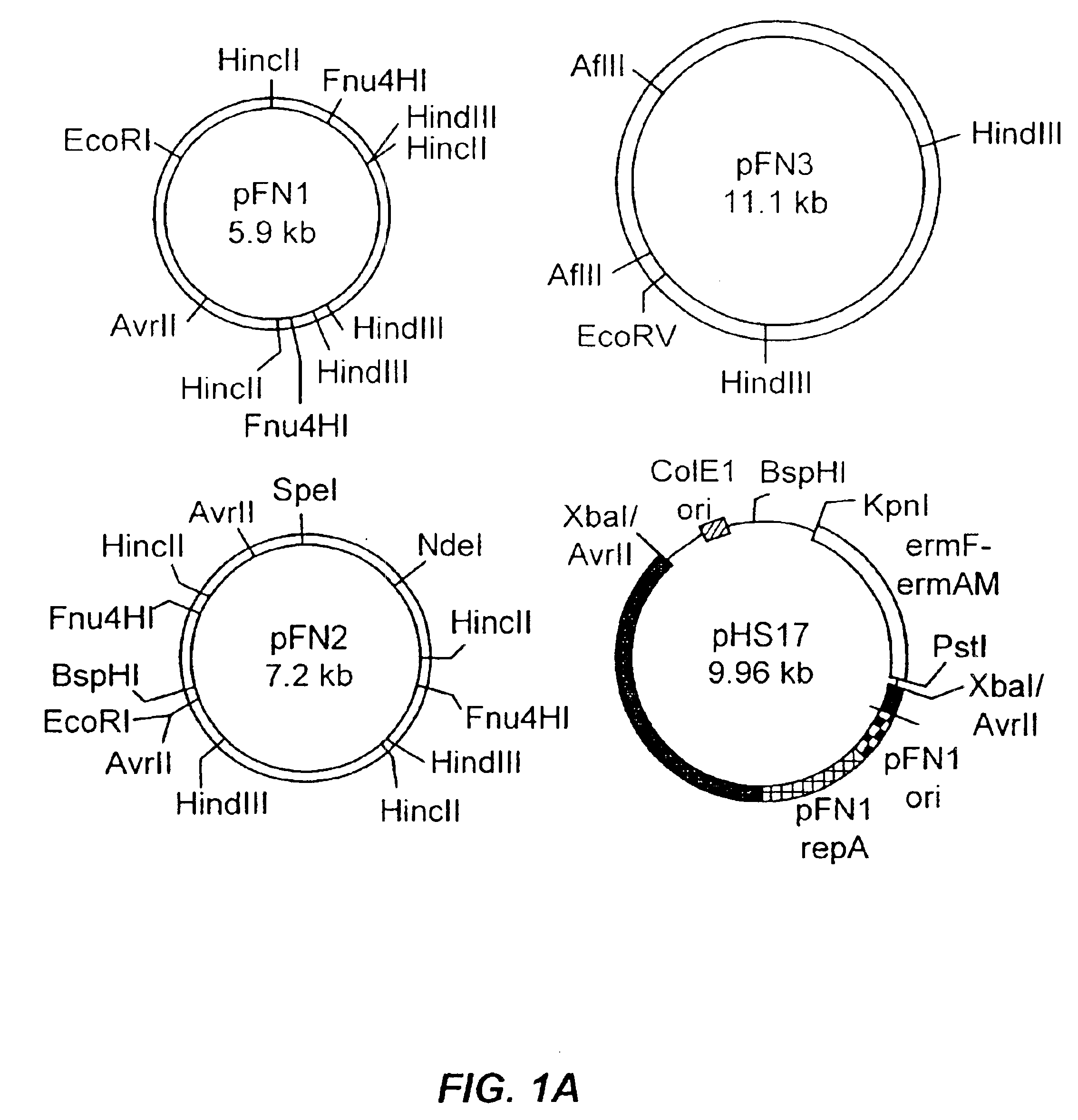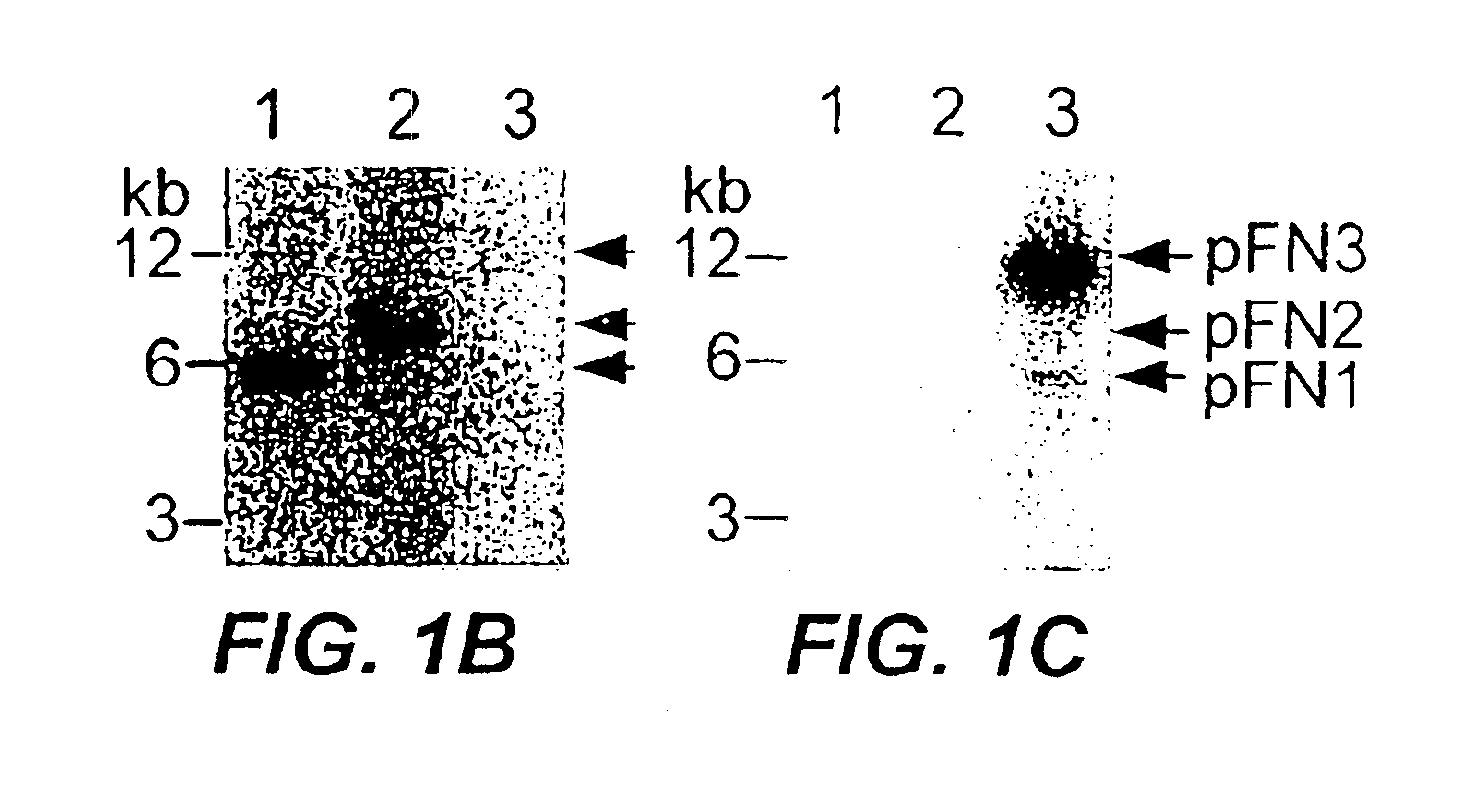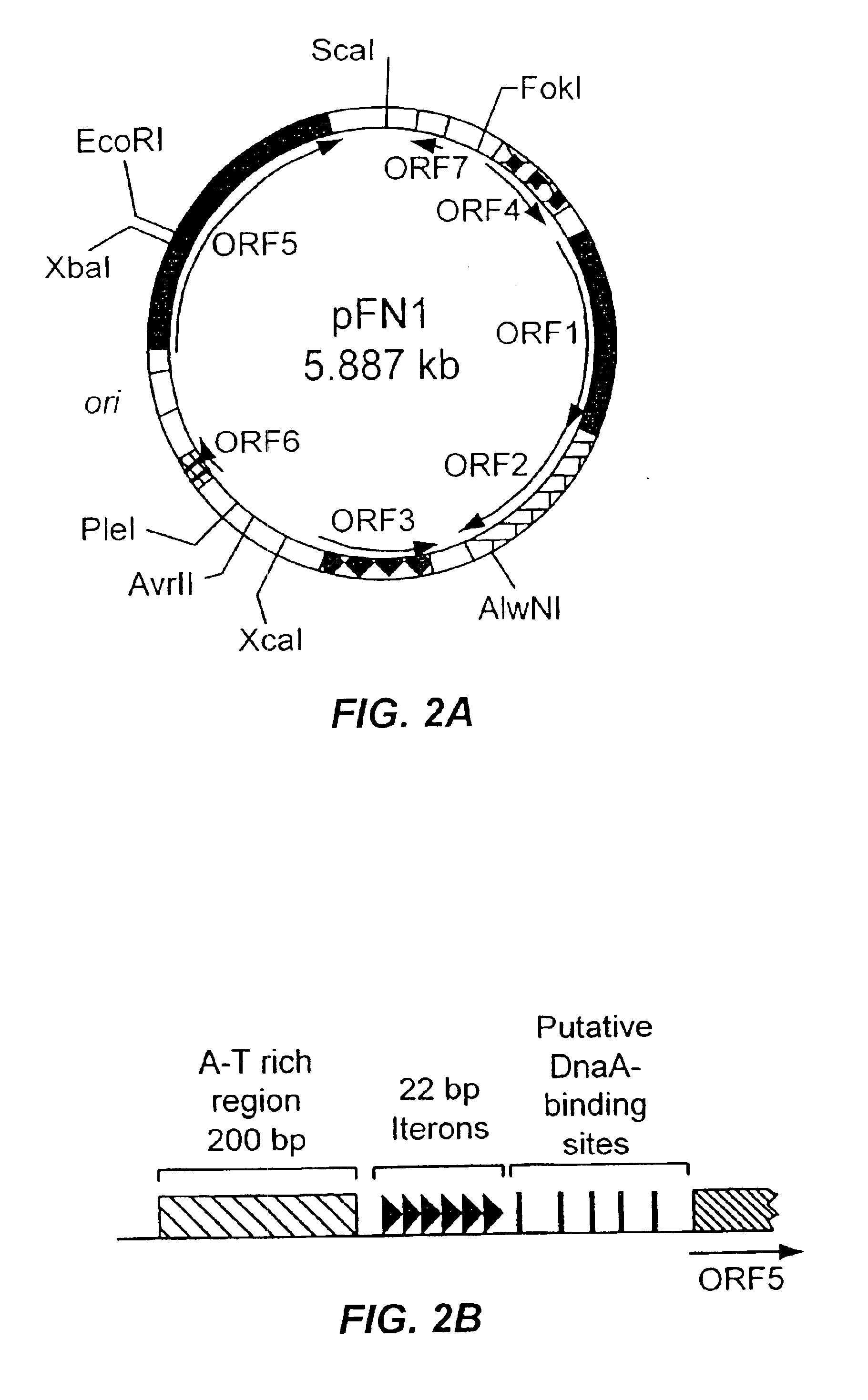Fusobacterium nucleic acids, plasmids and vectors
a technology of plasmids and vectors, which is applied in the field of origin of replication sequences and replication genes and proteins, can solve the problems of inability to manipulate genes by molecular manipulation, and achieve the effect of stimulating mucosal immunity
- Summary
- Abstract
- Description
- Claims
- Application Information
AI Technical Summary
Benefits of technology
Problems solved by technology
Method used
Image
Examples
example 1
Isolation and Characterization of F. nucleatum Plasmids
[0139]Three native plasmids pFN1, pFN2, and pFN3 (see, e.g.,Table 1; FIG. 1A) were isolated from strains of F. nucleatum using routine techniques (Wizard Plus Minipreps; Promega, Madison, Wis.; Qiagen Midi Preps, Qiagen Inc., Valencia, Calif.) and visualized on ethidium-stained 0.8% agarose gels. Restriction endonuclease mapping was accomplished using standard recombinant DNA technologies (see, Kinder Haake et al., Arch. Oral Biol. 42:19-24 (1997)). The results of restriction endonuclease mapping demonstrated that the plasmids varied in size and in the occurrence of several restriction endonuclease sites (see, FIG. 1A), suggesting that the plasmids were unrelated.
[0140]Southern hybridization studies were performed under conditions described in Kinder et al., Gene 136:271-275 (1993), and the results indicated that pFN1 and pFN2 share homology with each other, but not with pFN3 (see, FIGS. 1B-C). Nitrocellulose blots of plasmid an...
example 2
Determination and Analysis of pFN1 DNA Sequence and Partial pFN3 DNA Sequence
[0142]Due to its small size and superior plasmid yields, pFN1 was chosen for further analysis. The DNA sequence (GenBank Accession No. AF159249) was determined for both strands. Analysis of the compiled sequence revealed a circular structure of 5887 bp with 23% G+C content and seven putative open reading frames (ORFs defined as≧150 bp; FIG. 2A). Similarity searches were performed using the National Center for Biotechnology Information BLAST server (Altschul et al., J. Mol. Biol. 215:403-410 (1990); Altschul et al., Nuc. Acids Res. 25:3389-3402 (1997)). The sequence of pFN1 was highly homologous to the sequence of a 6281 bp F. nucleatum plasmid (pAD52, GenBank Accession No. AF022647). No similarity was found to any gene encoding antibiotic resistance or other selectable phenotypic marker. Antibiotic susceptibility testing indicated that the pFN1 host strain F. nucleatum 12230 was susceptible to penicillin G,...
example 3
Homology Studies Between Plasmids pFN1 and pFN2
[0146]To further characterize the regions of homology between pFN2 and pFN1, a Southern blot analysis was done using probes specific for two pFN1 genes. Plasmids pFN1 and pFN2 were subject to restriction endonuclease digestion using different restriction endonucleases and then electrophoresis on 0.8% agarose gel. The DNA was transferred to nitrocellulose, hybridized with the radiolabeled probe, and washed according to standard techniques (see, Kinder et al., Gene 136:271-5 (1993)). Partial restriction maps are as shown in FIG. 3. As evident in FIG. 3, different restriction endonucleases were used for these homology studies.
[0147]The repA and rlx gene sequences were amplified from pFN1 DNA using the polymerase chain reaction with oligonucleotide primers specific for these regions. The DNA probes used were amplified by polymerase chain reaction from pFN1 using custom primers (rlx primers: 5′-CCTGG TGAAGTAGATGAAG-3′ (SEQ ID NO:7), 5′-TTAGT...
PUM
| Property | Measurement | Unit |
|---|---|---|
| molecular weight | aaaaa | aaaaa |
| Tm | aaaaa | aaaaa |
| temperature | aaaaa | aaaaa |
Abstract
Description
Claims
Application Information
 Login to View More
Login to View More - R&D
- Intellectual Property
- Life Sciences
- Materials
- Tech Scout
- Unparalleled Data Quality
- Higher Quality Content
- 60% Fewer Hallucinations
Browse by: Latest US Patents, China's latest patents, Technical Efficacy Thesaurus, Application Domain, Technology Topic, Popular Technical Reports.
© 2025 PatSnap. All rights reserved.Legal|Privacy policy|Modern Slavery Act Transparency Statement|Sitemap|About US| Contact US: help@patsnap.com



